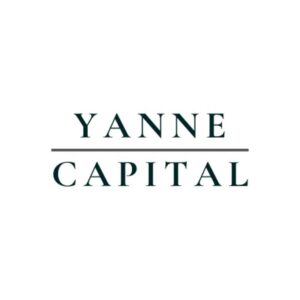Balancing risk and reward in personal investment portfolios is a crucial skill for financial success. This article presents valuable insights from seasoned professionals in the field of investment management. Readers will discover practical strategies to optimize their portfolios, learning from expert experiences and proven techniques.
- Learn from Past Investment Mistakes
- Seek Information Advantage in Investments
- Segment Portfolio for Preservation and Growth
- Align Investments with Leadership Values
- Employ Core-Satellite Investment Strategy
Learn from Past Investment Mistakes
It’s always a trade-off, and I’ve learned the hard way not to chase returns blindly. Early in my career, I got caught up in the hype around a mobility startup that was raising a late seed round. Great pitch, solid traction, charismatic founder—but I overlooked a key detail: burn rate versus cash flow runway. I put in a modest personal check, expecting a quick Series A. Six months later, they were struggling with unit economics, and the round fell apart. That was a wake-up call.
Since then, I approach investing with a split mindset. I carve out a portion—maybe 20-30%—for high-risk, high-reward opportunities like early-stage tech or health ventures. The rest leans into safer assets or companies with predictable cash flow and good fundamentals, some even within our client base, where I’ve had a front-row seat to their operations. When you’ve helped shape their investor story and sat in on due diligence calls, you get a pretty solid gut feeling.
What grounds me is access to information and being involved early. We often help companies long before they hit the radar of typical VCs. That proximity gives an edge, but it doesn’t eliminate risk—just makes it more informed.
 Niclas Schlopsna
Niclas Schlopsna
Managing Consultant and CEO, spectup
Seek Information Advantage in Investments
Balancing risk and reward isn’t about avoiding volatility—it’s about understanding it. Every investment decision starts with clarity on time horizon, purpose, and tolerance for ambiguity. Rather than chase returns, the goal is to allocate capital where conviction is stronger than consensus. That often means going against momentum when the fundamentals don’t justify the hype, or leaning in early when the data supports a long-term structural shift.
One investment that reflects this approach was in a specialized AI firm focused on backend process automation. At the time, it was a quiet corner of the market, but years of running large-scale operations revealed how critical efficiency would become in a digital-first world. That operational lens made it easier to assess the company’s real-world value, beyond pitch decks and projections. In hindsight, the reward looked obvious—but only because the risk was understood from the inside out.
 Anupa Rongala
Anupa Rongala
CEO, Invensis Technologies
Segment Portfolio for Preservation and Growth
I’ve built and exited multiple companies, and over time, I’ve learned that managing an investment portfolio requires the same mindset I bring to scaling a business, which is to know your risk exposure, play long-term games, and protect the downside before chasing upside.
For me, balancing risk and reward starts with clarity on purpose.
I segment my portfolio into two lanes: preservation and growth. The preservation side includes lower-risk assets like dividend stocks, real estate, and fixed income—these are designed to provide stability regardless of market swings.
The growth side is where I take calculated bets on startups, private equity, and emerging tech, including AI and infrastructure plays. I only fund the growth lane with capital I’m fully prepared to lock up or lose.
One example: I invested early in a SaaS startup that had a brilliant product but shaky leadership. Rather than walk away, I offered to mentor the founding team and brought in an operational advisor. That extra involvement helped stabilize the business, and when they exited two years later, the return more than justified the risk.
 Jeff Mains
Jeff Mains
Founder and CEO, Champion Leadership Group
Align Investments with Leadership Values
In investing—as in leadership—clarity beats intensity.
Risk and reward are always at odds, but I’ve learned that the real key is knowing yourself. I help CEOs make decisions under pressure, and I bring the same coaching lens to my investments: what’s the real trade-off, and does it serve my long-term goals?
A concrete example was during a market dip when I resisted panic-selling and instead rebalanced into dividend-yielding assets. That wasn’t about trying to catch the bottom—it was about making a choice that reflected how I lead: steady, strategic, and anchored.
I often say to clients, “Your portfolio should reflect the kind of leader you are. Build it with intention. Let it reflect your values, your vision, and your capacity to stay the course when others don’t.”
 Natalie Michael
Natalie Michael
Managing Partner, CEO Next Chapter
Employ Core-Satellite Investment Strategy
I balance risk and reward by adhering to a core-satellite strategy. Approximately 80% of my portfolio is invested in low-cost index funds and blue-chip stocks for stability, while the remaining 20% is allocated to higher-risk assets such as cryptocurrencies or early-stage startups.
For example, I allocated a small portion to Ethereum in 2020—not enough to derail the portfolio if it declined, but sufficient to benefit from potential upside. This mix helps maintain long-term goals while providing room to explore new opportunities.
 Ahmed Yousuf
Ahmed Yousuf
Financial Author & SEO Expert Manager, CoinTime













